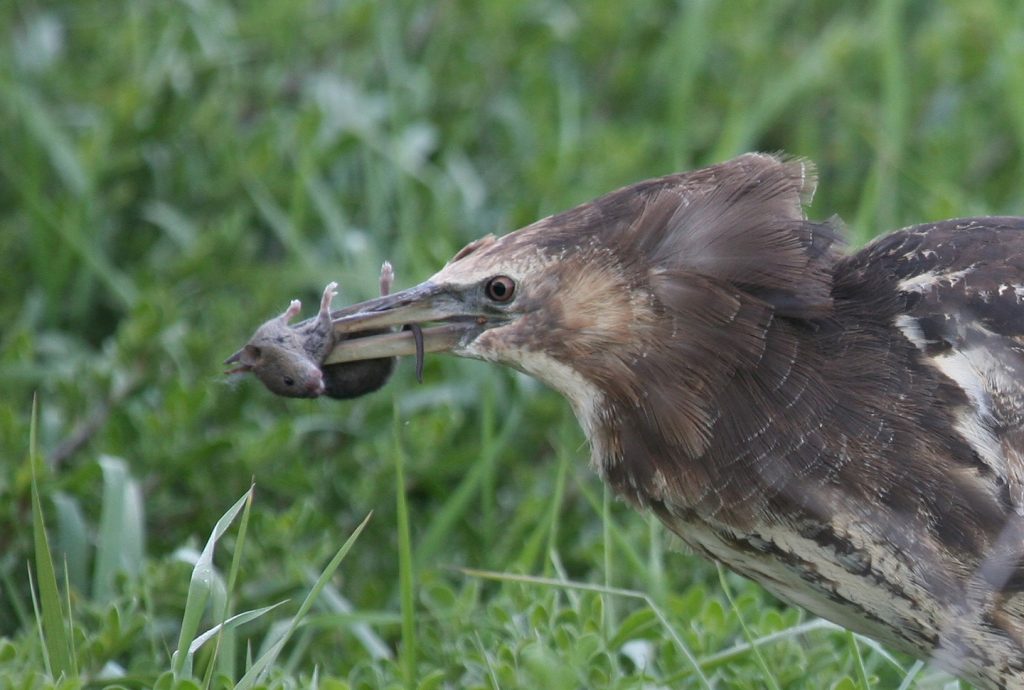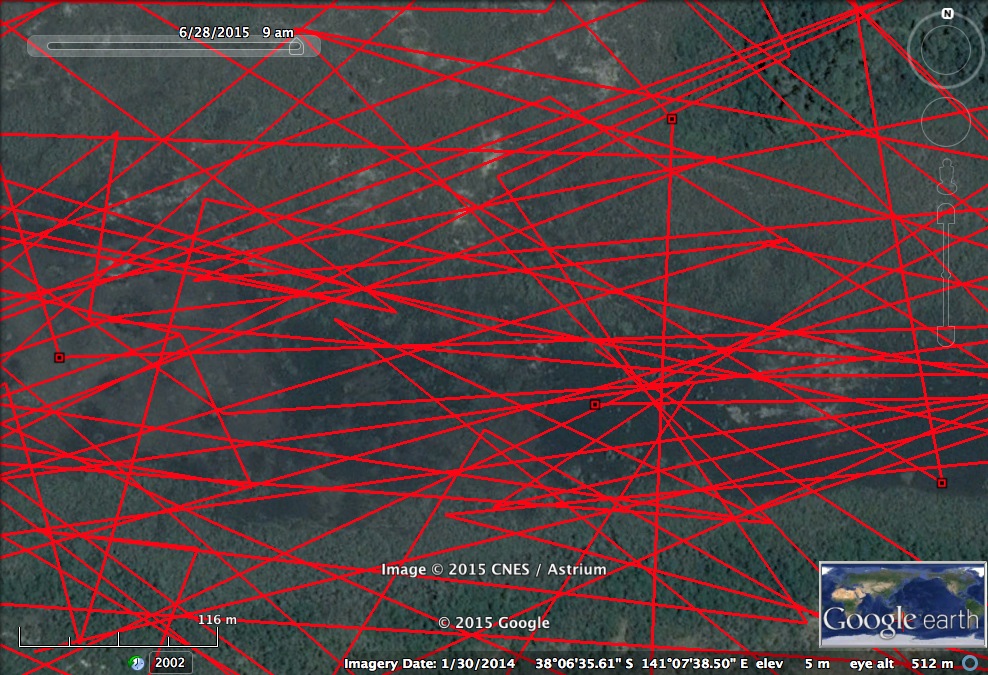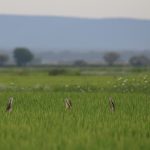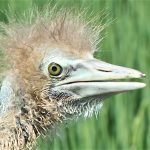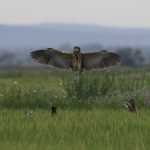Our discovery that rice crops support the largest known breeding population of one of the world’s rarest, most threatened waterbirds is raising a few eyebrows. The value of agricultural habitats like these is not widely recognised in Australia. Intriguingly, it’s also becoming clear that winter cereals play a role in supporting bitterns between rice seasons.
Just a couple of weeks ago, Ian Payne, a Coleambally rice farmer, flushed a bittern using a young wheat crop. It had been planted on rice stubble. This rotation is common practice, capitalising on the soil moisture. There was some old Barnyard Grass next to a supply channel, and Ian suspected it might be providing the necessary cover for this sneak. Bitterns use it a lot in the rice fields.
During winter and spring last year, we had four similar records. In the Murrumbidgee Irrigation Area, bitterns were sighted in wheat near Wilbriggie and in oats near Koonadan, both recently watered crops. And back in the Coleambally region, there were two separate records of bitterns in wheat crops last year. This begs the question, without the usual abundance of frogs and fish in the rice, what is the attraction?
Mice may be important prey for bitterns in wheat and rice crops. Photos by Peter O’Connell.
Mice seem a good candidate. The photos above, although taken outside of the Riverina rice-growing region, do not capture a one-off event, with several observers seeing bitterns eat mice at Werribee’s Western Treatment Plant. And back in the rice, a few years ago, Peter Merritt watched four bitterns near Jerilderie devouring mice. Just a couple of months back when we were busy trying to catch bitterns to attach transmitters, the only apparent, potential prey at some sites was mice. The crops were dry, ready for harvest, and no puddles remained in the channels. If mice are important prey for bitterns in wheat and rice crops, then they’re not alone. For example, Black-shouldered Kites appear to thrive on the mice in rice fields, and they probably helped attract the Eastern Grass Owls we’ve seen.
This bittern, hunting on the edge of a rice crop, was one of four seen preying on mice at this site in 2011. Photo by Peter Merritt (www.merrittimages.com).
Robbie has now been at Long Swamp for eight weeks. It’s clear, he loves it there and as you can see below, he’s had a good look around, carving it up. But what will Robbie do next? Much to our surprise, Debbie Sullivan from Birdlife Australia has recently heard booming males over in south-western Western Australia. It seems conditions are right and the males at least are raring to get the breeding season underway. It makes us think about young Robbie and his future breeding prospects. He’ll perhaps be a little too young, but it’s not out of question that he’ll attempt to breed in his first year. If he is an early starter, the key question remains: will he return to the rice to breed or try and woo a local female down on the coast with his deep booms? Time will tell.
Some of Robbie’s movements in one part of Long Swamp, 550 kilometres from his Coleambally rice crop.
Black-shouldered Kites playing pass the mouse above a rice crop earlier this year.


